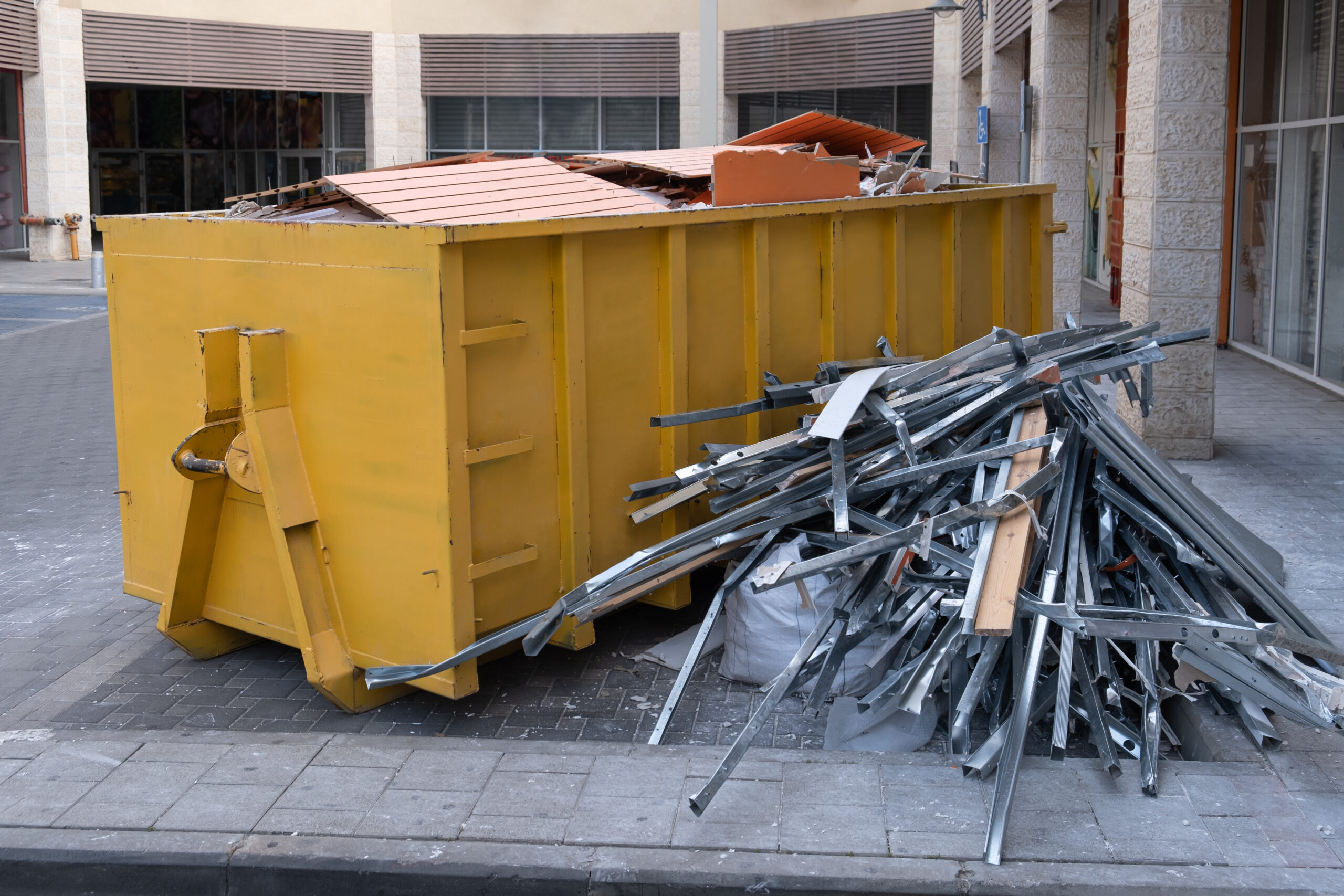When tackling a construction project, whether it’s a small renovation or a major build, managing waste can feel like an overwhelming puzzle. Choosing the right dumpster is key to keeping your worksite organized and efficient. But how do you navigate the rental landscape? From deciding on the size you need to finding the best local provider, there are several factors to consider that can impact both your budget and timeline. This guide will help simplify the process by offering practical tips and insights, making sure you choose wisely—and spend less—while handling all that debris.
To rent a construction dumpster, simply visit our website and fill out the online request form, or contact our customer service team for assistance. We offer various sizes of dumpsters to accommodate different project needs, ensuring you have the right solution for your construction waste disposal.
A Comprehensive Guide to Construction Dumpster Rental
When it comes to renting a construction dumpster, taking your time to understand and plan the essentials can save you both hassle and money. First, determining the size of the dumpster is crucial. Think of it like packing for a long trip—you wouldn’t want to cram everything into a small suitcase. For smaller renovation projects or light clean-ups, a 10-yard dumpster might suffice. However, if you’re undertaking a major remodel or new build, consider sizing up to a 40-yard dumpster. This extra capacity means fewer trips and less hassle in managing waste.
After pinpointing the ideal size for your project, you’ll want to take a closer look at local rental companies. Not only do rates vary widely among providers, but so too does the level of service they provide. Imagine having difficulty getting someone on the phone when you have an urgent question about your order. Research customer reviews online; they often reveal insights beyond just pricing, such as timely deliveries and customer support responsiveness. Make sure you choose a reliable provider that aligns with your expectations.
Finding the right company isn’t just about getting the best price; it’s about ensuring that the entire rental experience is seamless from start to finish.
Once you’ve selected a rental company, check if any permits are required by your local municipality. Some jurisdictions may necessitate permits for placing dumpsters on public property or sidewalks. Consult your city’s regulations ahead of time—nobody wants to be caught off guard by fines or delays that could set your project back.
The next significant step is scheduling the delivery and planning where to place the dumpster on site. A well-thought-out placement can streamline your workflow tremendously. Consider accessibility: the easier it is for workers to load debris into the dumpster, the more efficient your project will become. You wouldn’t want obstructions like trees or vehicles blocking access to the container when it’s time for pickup. Taking these logistics into account during the planning phase greatly enhances productivity and avoids unnecessary interruptions down the line.
With all these detailed considerations in mind, understanding how to properly match your project’s needs with the right dumpster size will pave the way for effective waste management. Let’s explore what factors are pivotal in selecting the appropriate dimensions for your container.
Choosing the Right Size Dumpster
When it comes to selecting a dumpster for your construction or renovation project, understanding the specific needs of your work is paramount. If you rent a dumpster that’s too small, you might find yourself making multiple trips to dispose of debris, which not only wastes your precious time but also increases your costs. Conversely, opting for a dumpster that’s too large can mean paying for unnecessary space that you won’t utilize. Therefore, it is crucial to assess the volume of waste you’ll generate and match that with an appropriate dumpster size.
Size Considerations
Let’s explore how each project type can guide your choice in dumpster sizes. For minor home renovations, like upgrading a bathroom or removing a few small furniture items, a 10-yard dumpster is often desirable. This compact size measures approximately 10 feet long, 8 feet wide, and stands around 3.5 feet high. It’s ample enough to hold about three truckloads of debris without overwhelming your driveway or yard.
Moving up the scale, if your project demands more space, like a kitchen remodel where cabinets and appliances are being torn out, then a 20-yard dumpster should be on your radar.
This medium-sized option stretches around 22 feet long and 8 feet wide with a height of about 4.5 feet. It packs in roughly six truckloads of debris. Think of this size as an efficient middle ground where you can comfortably manage significant amounts of waste without overextending your budget.
But what if you’re tackling something even larger? Here’s where it really pays to think ahead—and consider size options like 30-yard or 40-yard dumpsters for massive construction or demolition projects.
These giants measure from around 22 to 24 feet in length and can accommodate between nine to twelve truckloads of debris. They’re perfect for new home builds or extensive home additions that generate tons of waste, allowing ample space for disposing all types of construction materials without hassle.
By accurately gauging your project’s scale and understanding how each dumpster size aligns with your needs, you can avoid costly errors and ensure smooth operations throughout the demolition or construction process. It’s always beneficial to err slightly on the side of caution and select a dumpster size that allows for some extra capacity. This small additional investment can save you from the inconvenience and chaos of juggling waste disposal during an ongoing project.
With these insights into selecting the right dumpster size, we can now turn our attention to exploring strategies that will help keep costs low while ensuring efficiency throughout your project.
Cost-Effective Solutions and Savings
When you think about dumpster rentals, it’s easy to overlook the long-term implications of your choices. However, making strategic decisions can dramatically alter your project budget. One effective way to secure savings is by renting a dumpster for a shorter duration. The key here is timing; being conscious of how many days you actually need the dumpster can help you avoid unnecessary daily fees that add up quickly. Always check the maximum allowable rental periods to avoid incurring additional charges for extending your rental beyond what was agreed upon.
At this juncture, comparing prices from multiple rental companies is an essential step in ensuring you’re getting the best deal available. Diligent consumers often discover striking price differences when they take the time to shop around. Utilize online comparison tools, read customer reviews, and reach out to office representatives for potential promotions or discounts that may not be advertised. Companies often offer deals for those who are proactive in negotiating rates.
Navigating the world of waste disposal might seem daunting; however, it truly comes down to leveraging smart strategies that maximize your resources.
When managing dumpster costs effectively, consider these additional strategies:
- Consolidate Waste: By organizing waste into types and sizes beforehand, you can optimize the loading process and ensure maximum utilization of space within the dumpster.
- Avoid Overfilling: Heed the fill line inside the dumpster! Not only does overfilling come with hefty fines, but it can also hinder safe transportation.
- Efficient Scheduling: Coordinate delivery and pickup times strategically. Minimizing rental duration reflects savvy planning—getting your materials organized to have everything ready when the dumpster arrives can save days on your overall timeline.
- Rental Discounts: Some companies provide lucrative discounts for long-term rentals or bookings involving multiple units. This could be especially beneficial if you’re undertaking a significant renovation or large-scale building project.
Every small adjustment you make in managing your dumpster rental can lead to substantial savings over time. Engaging with a local expert can streamline this entire process further by guiding you through efficient service options that align perfectly with your project’s needs while keeping costs low. As you plan your rental wisely, it will be important to understand what types of materials can be accepted in these containers for optimal efficiency.
Types of Materials Accepted
When it comes to dumpster rentals, knowing what can be thrown in is just as important as knowing what can’t. The broad acceptance criteria generally cover a range of construction debris, but it’s crucial to pinpoint exactly what each specific service allows.
For instance, wood and lumber are typically welcomed by most dumpster services. This includes not just old frames or beams but even small offcuts from renovation tasks. While the disposal of wood seems straightforward, some companies do have limitations on treated wood—so that’s worth clarifying before you pile it all in.
Special Cases for Common Materials
Moving on to drywall, this material tends to be frequently accepted as well, but there’s a catch: certain jurisdictions mandate recycling rather than landfill disposal. So if you’re renovating an older home and tearing out drywall, be ready to check local regulations regarding its disposal.
Now let’s talk about asphalt shingles. Homeowners often replace roofs or remodels, leading to plenty of waste shingles. While they are usually permitted in dumpsters, some companies place restrictions based on weight since too many shingles can overload a standard container. If you find yourself dealing with heavy roofing waste, it might be wise to inform your rental provider upfront.
Regarding concrete and brick, these robust materials are generally accepted, though they present their own challenges. Many dumpsters can’t handle the weight of concrete slabs or bricks without special configurations. Renting a separate dumpster specifically designed for heavy materials ensures that you’re not only complying with regulations but also preventing damage to the rental equipment itself.
Clarifying which materials are acceptable goes a long way toward ensuring that you avoid surcharges or fines, contributing to a purchase that’s smooth and budget-friendly.
Remember that beyond these common materials, hazardous waste such as paint, chemicals, or electronics cannot be disposed of in regular construction dumpsters and require special handling. Always verify policies with your rental service provider because missteps in material disposal can lead to hefty charges and unexpected delays in your project timeline.
Understanding these aspects of material disposal sets the stage for exploring the best available options in the market, ensuring you make informed choices when selecting your rental partner.
Top Companies for Dumpster Rental
Selecting the right dumpster rental company is vital to a smooth and successful project, and there are a few key players you should consider. One standout option is Republic Services. They have earned a positive reputation for their reliability and extensive nationwide coverage. Customers often rave about their customer service, which includes flexible rental options that can adapt to your specific needs, whether you’re tackling a home renovation or gearing up for a large construction job.
Another major player is Waste Management. What sets them apart is their broad range of dumpster sizes tailored for different project types and budgets. More importantly, they use a straightforward pricing model that eliminates hidden fees, so you know exactly what you’re paying for when you sign up. Their commitment to transparency is reassuring, allowing customers to focus on their projects without worrying about unexpected costs.
When considering dumpsters in the Texas region, Tiger Sanitation comes highly recommended. Not only do they offer competitive rates, but they also pride themselves on excellent customer service. What’s more, they provide the convenience of online booking through ChooseTiger.com, making it easier than ever to secure your rental with just a few clicks.
Many customers report positive experiences across these companies, noting prompt delivery and pickup services that make the entire process seamless. This feedback highlights the importance of choosing a reliable provider who values customer satisfaction.
As you explore your options for efficient waste management, it’s essential to keep in mind practical steps that will ensure your construction area remains organized and effective.
Construction Cleanup Tips and Alternatives
Efficient cleanup is integral to maintaining a safe and organized construction site. Regular interruptions in workflow due to clutter not only lead to inefficiencies but can also facilitate serious accidents. To combat this, employing a systematic approach becomes essential. This means creating a routine that fits seamlessly into your daily operations.
Effective Cleanup Tips
One of the first steps you should take is to establish daily cleanups. Setting aside even just 15 to 30 minutes at the end of each workday can make a significant difference. This time should be dedicated to picking up loose materials, sweeping up debris, and discarding smaller unwanted items, all of which prevents clutter buildup and ensures workers have clear pathways for movement.
Creating designated zones is another effective strategy that can simplify waste management. By keeping waste segregated—construction materials in one area, recycling in another—you streamline disposal processes. This not only enhances safety but also reduces the effort required during the final cleanup stages, making everything more manageable from start to finish.
Another critical aspect of effective cleanup lies in using proper tools. Investing in heavy-duty trash bags, robust push brooms, and reliable wheelbarrows ensures that workers are equipped to handle the varying types of waste safely and efficiently. Using these tools minimizes messes while promoting better handling practices on-site.
Alternatives to Traditional Dumpsters
While choosing the right method for waste disposal is crucial, considering alternatives can yield beneficial results. For sites with restricted space, roll-off containers can be particularly advantageous. These containers can hold large quantities of waste without taking up too much ground space, making them ideal for tight environments.
Additionally, using mobile waste bags provides flexibility as they are easily transportable and specialize in pick-up services by local providers. They allow for spontaneous cleanouts without awaiting scheduled dumpster pickups. This adaptability helps keep your site tidy as different tasks progress throughout the project.
Both tips and alternatives provide strategies to maintain an organized worksite, but always remember: assess the scale and scope of your project when choosing your cleanup method.
In summary, by implementing these cleanup tips and exploring alternative waste disposal methods, you can ensure a more efficient and safer construction site.



